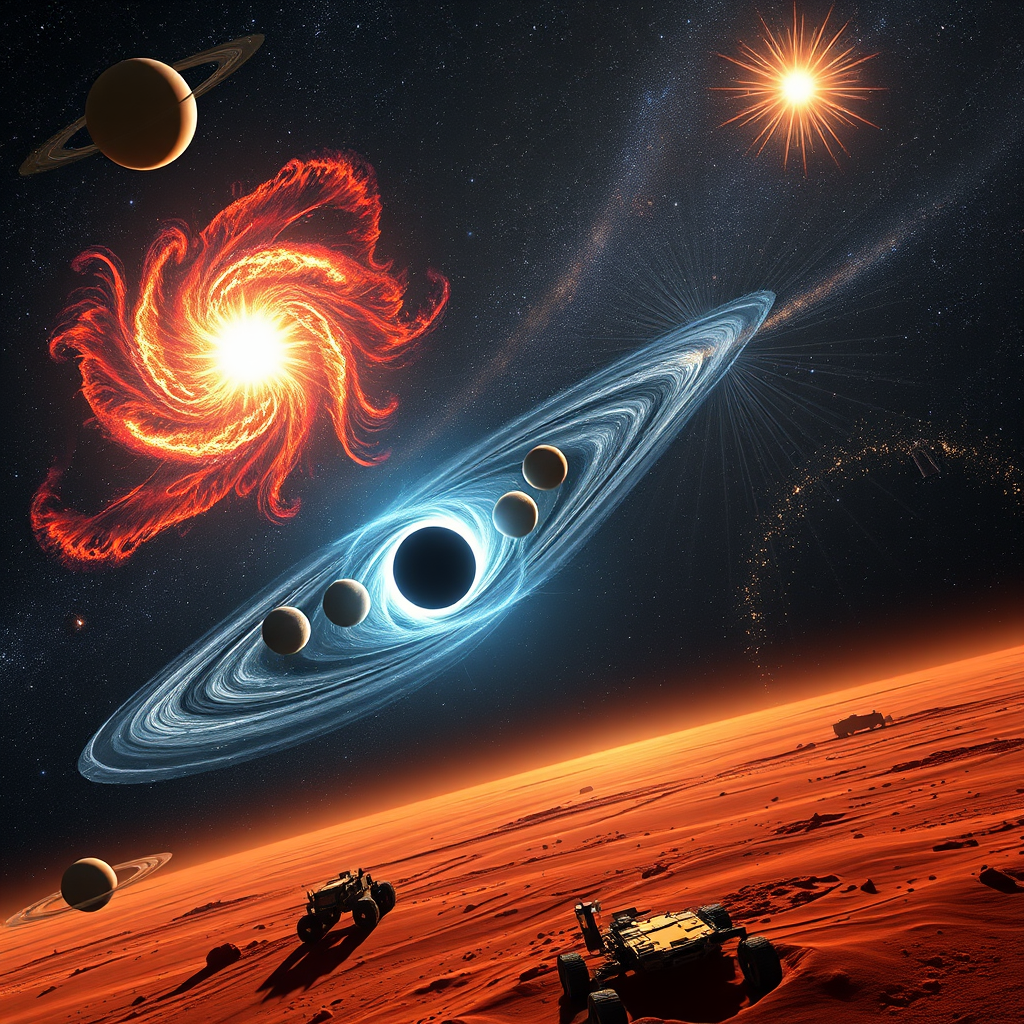
This year, astronomers worldwide have made incredible strides in understanding our universe. More than 5,500 exoplanets have been confirmed, with 20 in habitable zones, thanks to missions like JWST and TESS. Some planets, like those in the TRAPPIST-1 system, show atmospheric signs of water vapor, sparking excitement about potential habitability. Meanwhile, studies of dark matter hint at more complex interactions, while dark energy continues to drive universe expansion, though some mysteries remain.
Sky surveys like the Vera C. Rubin Observatory are revealing thousands of supernovae, fast radio bursts, and moving objects, enriching our view of dynamic cosmic events. The Square Kilometre Array (SKA) is mapping hydrogen across time, helping us understand the universe’s early epochs. Cutting-edge images from the Event Horizon Telescope show black hole behaviors at unprecedented detail, including Sagittarius A*. Additionally, gravitational wave detectors have recorded over 50 neutron star mergers, shedding light on how heavy elements like gold and platinum are formed.
Closer to home, asteroid tracking has become more precise, with 30+ Near-Earth Objects identified as potential hazards. Mars exploration continues with new rovers finding signs of ancient water and possible biosignatures. Upcoming missions include extensions of the JWST, NASA’s lunar Gateway preparations, and ESA’s Euclid satellite, designed to map the universe’s large-scale structure.
Overall, 2025 is a remarkable year for space science, pushing the boundaries of our cosmic understanding and hinting at even more discoveries ahead! 🌌✨
#Astronomy #Space2025 #CosmicDiscoveries #Exoplanets #DarkMatter #BlackHoles #MarsExploration #LunarMission

